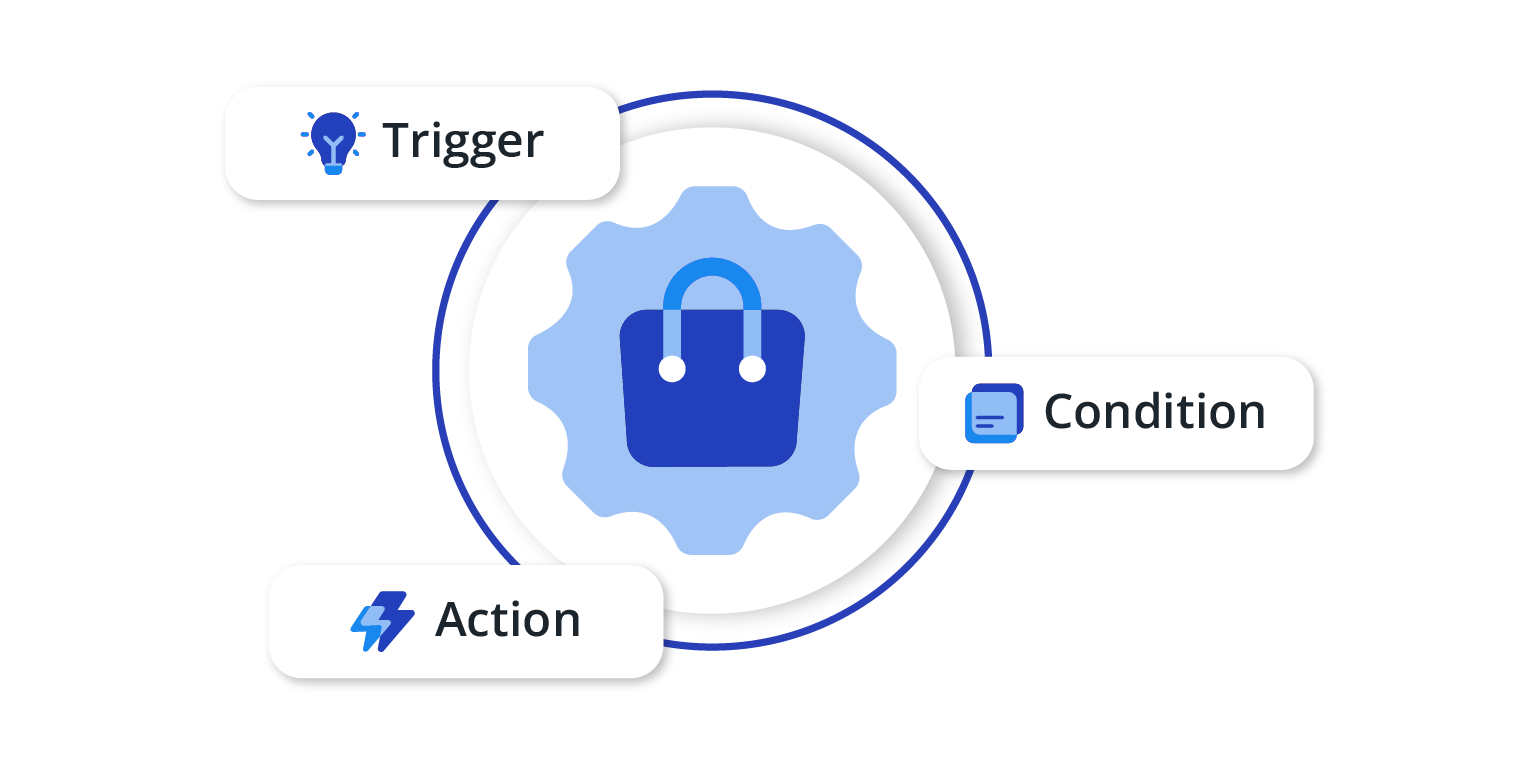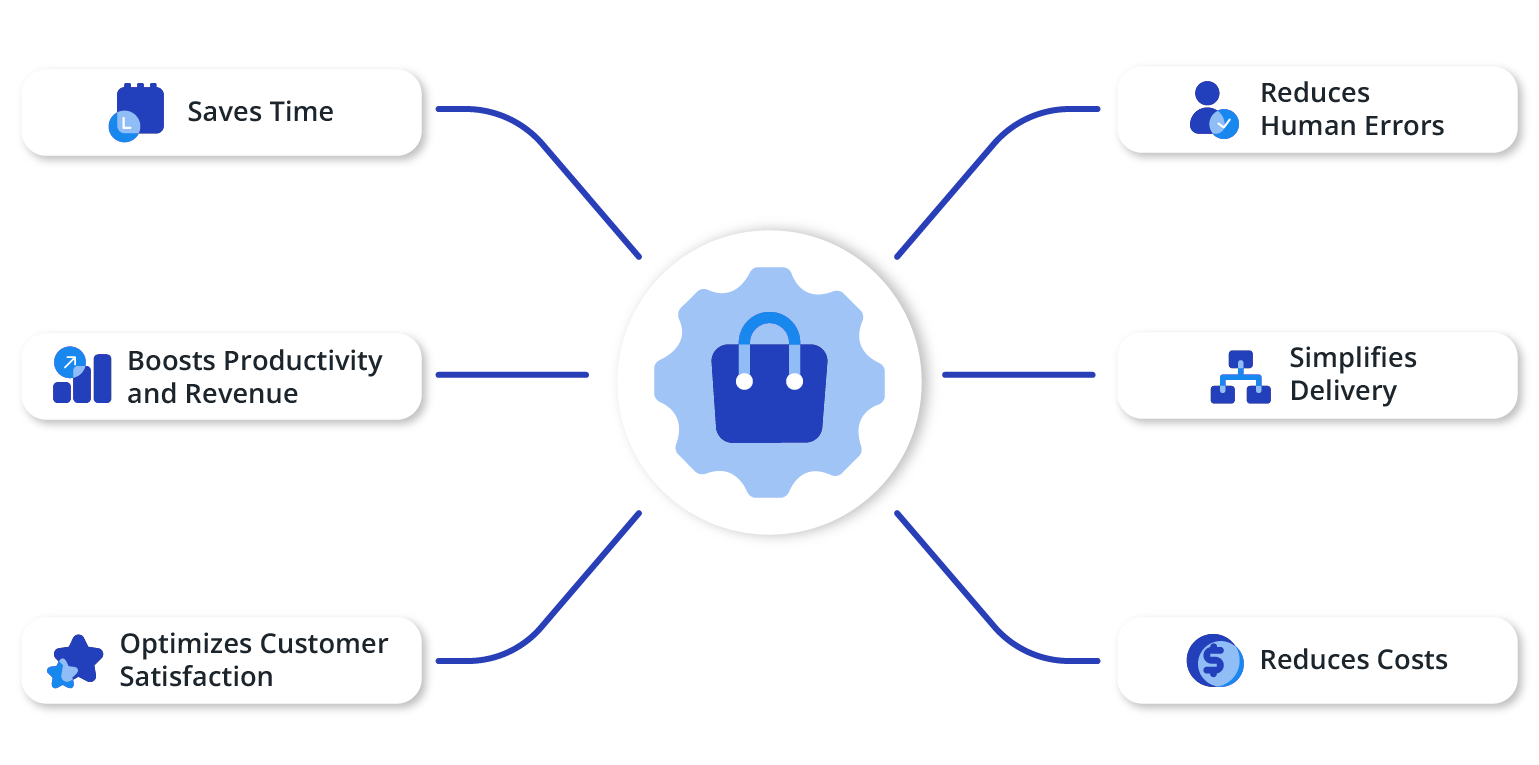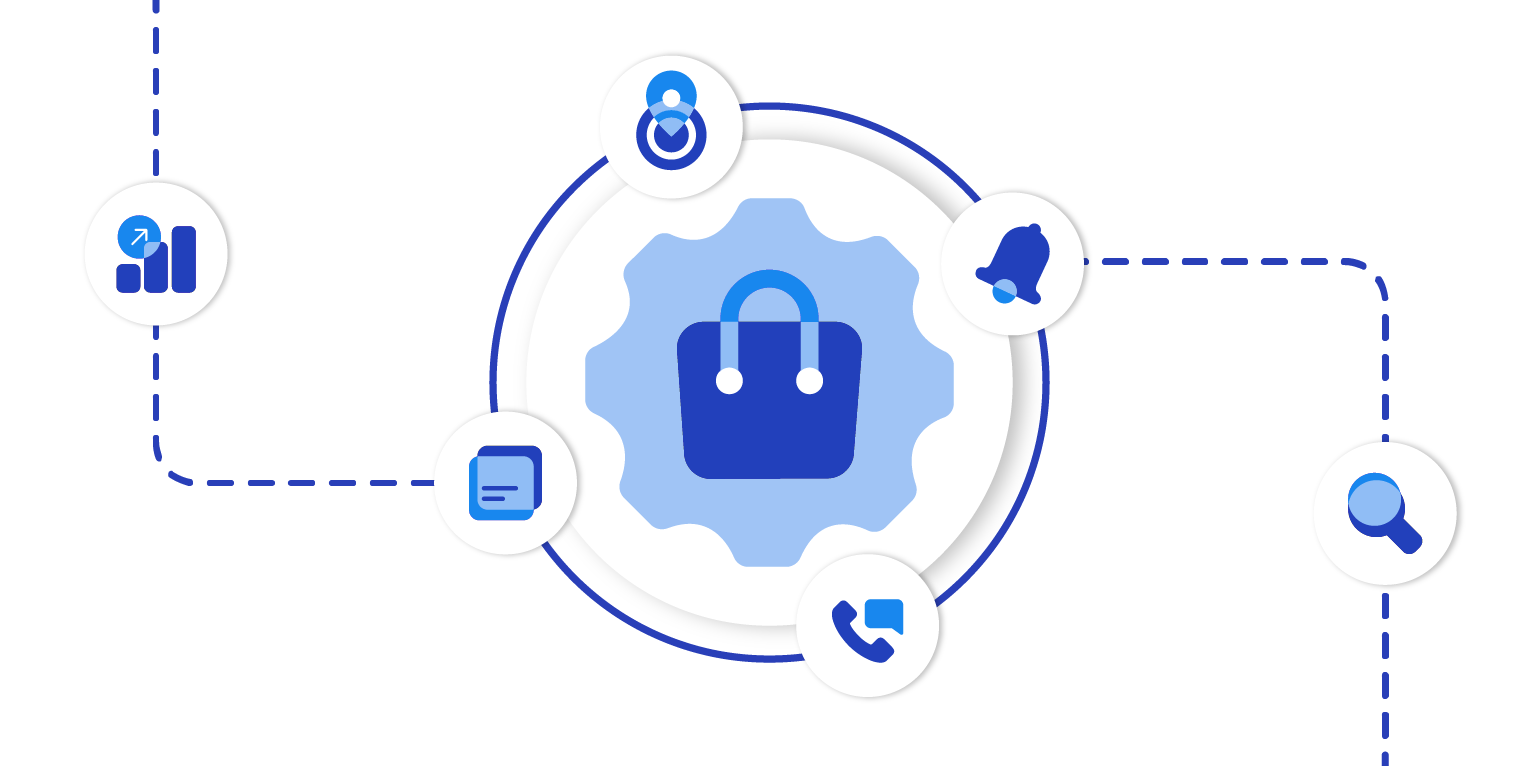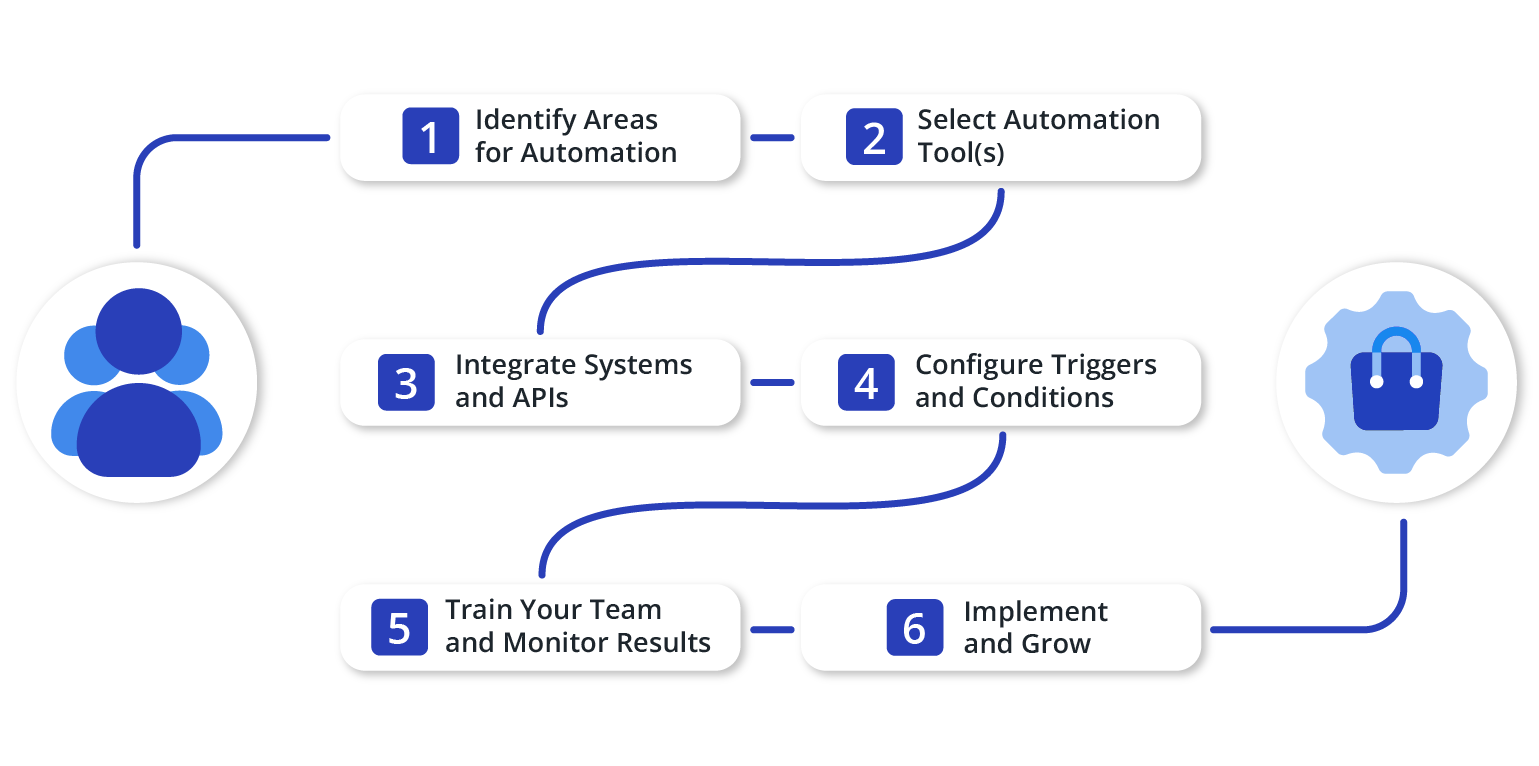In the fast-paced world of e-commerce, business owners, marketers, and supply chain managers are constantly seeking innovative ways to streamline operations, maximize efficiency, and enhance customer experience. One proven strategy is automation.
Automation refers to the use of technology to perform tasks with minimal human intervention. It has swept across various industries, from manufacturing to service delivery, and e-commerce is no exception. Businesses that can harness its power stand to gain a significant competitive advantage.
Let’s dig deeper into this transformative technology.
Understanding E-Commerce Automation
Essentially, e-commerce automation uses technology to automate repetitive business tasks, saving time and resources for other critical tasks.
From inventory management and transaction processing to email marketing and customer support, automation can significantly streamline operations, improve efficiency, and enable online retailers to provide a seamless shopping experience to customers.
Automation can benefit businesses of all sizes. For small businesses, it can level the playing field by enabling them to compete with larger companies without needing many employees. For larger corporations, automation can drive massive gains in efficiency, resulting in considerable cost savings.
How Does E-Commerce Automation Work?
E-commerce automation works based on three fundamental components: triggers, conditions, and actions.
Trigger
Triggers are specific events that initiate an automated process. For instance, when a new customer signs up on your e-commerce platform, it could trigger the automation system to send a welcome email. Conversely, if a customer abandons their shopping cart, the system could be triggered to send a reminder email.
Condition
Conditions refer to specific criteria that must be met for the automation to be implemented. For example, if the stock of a product gets too low, it may trigger an automatic order to restock.
Action
Actions refer to the steps the automation system takes once a condition is met following a trigger. Take, for example, when a user signs up for a newsletter on an e-commerce site (trigger). If they don’t buy anything in a week (condition), the system might automatically send them a discount to encourage a purchase (action).
When these three components work well together, an e-commerce business can run more smoothly and efficiently.
Who Benefits From E-Commerce Automation?
E-commerce automation benefits several stakeholders within an organization and beyond. Let’s take a look at how various roles and individuals stand to gain from implementing this innovative technology.
Business Owners
Automation is a huge help for business owners, especially those juggling a lot of functions within a company. It handles tedious, repetitive tasks with precision so they can focus their energy and expertise on crucial strategic decisions.
Moreover, with automation handling tasks that would otherwise require human labor, businesses can have fewer employees. This reduction in personnel not only cuts down labor costs but also boosts profits.
Operations Managers
For operations managers often dealing with the pressure of maintaining seamless workflows, automation eases their burden. It helps things run smoothly, eliminates inefficiencies, and gives them better oversight. This means more reliable operations, less stress, and more time to improve other critical business areas.
Marketing Department
Marketing, with its countless repetitive tasks, is a prime candidate for automation. It takes over tasks such as sending promotional emails and scheduling social media posts. This allows marketers to spend their time on more significant tasks such as developing creative campaigns, understanding consumer behavior, and planning content creation.
As a result, marketers can work smarter and more effectively, driving stronger results and enhanced customer engagement.
Customer Service
Customer service gets a big boost from automation. Tools like automated chatbots can handle common customer queries, drastically improving response times and overall customer satisfaction.
Human agents are then free to focus on more complex issues and offer personalized guidance, improving the quality of service and making the customer service department more efficient and effective.
Web Developers and Designers
Web developers and designers, the architects of the e-commerce platform, also reap the benefits of automation. Automation can assist with tasks such as testing new features, scheduling website backups, and monitoring website performance.
This ensures the e-commerce platform remains updated and secure and performs optimally, ultimately improving user experience.
Warehouse and Shipping Personnel
For those working in warehouse and shipping, automation tools can simplify inventory management, optimize warehouse organization, and streamline the shipping process.
Automation can handle tasks like order picking, packing, and dispatching, making these processes more efficient, error-free, and timely. This increases overall productivity and decreases errors that could affect customer satisfaction.
Customers
Last, but certainly not least, customers, the heartbeat of any e-commerce business, enjoy a smoother and more personalized shopping experience thanks to automation.
With faster order processing, accurate real-time inventory information, and personalized marketing based on their preferences and shopping behaviors, customers are given a unique, tailored shopping experience. This level of personalization and efficiency leads to higher customer satisfaction, fosters loyalty, and encourages repeat transactions.
Pros of E-Commerce Automation
E-commerce automation is a powerful tool that delivers a multitude of advantages. From saving time to boosting revenues, it reshapes how businesses operate, making a huge impact on bottom-line results and customer satisfaction.
Saves Time
One of the most compelling advantages of e-commerce automation is its ability to save time. Repetitive tasks that used to consume hours, if done manually, can be accomplished within minutes or even seconds with automation.
This allows staff to focus on more strategic, value-adding tasks, such as nurturing the business’s growth, exploring new markets, or enhancing customer service.
Boosts Productivity and Revenue
Beyond saving time, e-commerce automation can significantly boost productivity and, in turn, raise revenue. By streamlining processes such as order processing, automation ensures orders are handled quickly and correctly, eliminating delays and mix-ups.
Automation also helps maintain optimal stock levels by continually monitoring inventory and initiating restocks when necessary, thus preventing lost sales due to out-of-stock items. Moreover, automation can personalize marketing campaigns based on customer behavior and preferences, making marketing efforts more effective.
All these benefits contribute to enhanced productivity, increased sales, and, ultimately, a surge in revenue.
Optimizes Customer Satisfaction
Automation is a powerful ally in enhancing the customer journey. It ensures a smooth and personalized shopping experience, from product selection to post-purchase support. Automated customer service, for example, can provide instant responses to customer queries or issues, reducing wait times and frustration.
Additionally, personalized marketing, powered by automation, can make customers feel valued and understood, leading to stronger relationships, repeat business, and positive word of mouth.
Reduces Human Errors
E-commerce automation’s role in minimizing human errors cannot be overstated.
Manual handling of tasks is prone to errors, whether it’s incorrect inventory data, errors in order processing, or mistakes in marketing emails. Such inaccuracies can lead to customer dissatisfaction or financial losses.
Automation, in contrast, ensures tasks are performed with precision, increasing reliability and trust in the brand.
Simplifies Delivery
Automation simplifies the delivery process for both businesses and customers.
On the business side, automation can expedite order picking and packing in the warehouse, ensuring orders are shipped promptly and accurately.
On the customer end, real-time shipment tracking provides transparency and confidence, making the whole process more straightforward and reliable.
Reduces Costs
Finally, e-commerce automation can significantly reduce costs. By streamlining operations, it eliminates inefficiencies, which often lead to unnecessary expenditures. By reducing the need for labor-intensive tasks, it reduces labor costs. Also, by minimizing errors, it saves the costs associated with rectifying errors and handling customer dissatisfaction.
This overall cost reduction significantly improves an e-commerce business’s bottom line, making it more profitable and competitive.
Cons of E-Commerce Automation
E-commerce automation brings many benefits, but there are also challenges to consider when using this technology.
Technical Issues
Firstly, automated systems can occasionally experience technical problems, including downtime, software bugs, and complexities in integrating with existing systems. These technical issues can disrupt operations, causing delays or even financial losses.
Also, there’s a risk of losing data if the system crashes, hence the need for regular data backups and robust IT support.
Customer Resistance
Another potential challenge is the resistance from some customers who are comfortable with existing procedures.
Some may have privacy concerns, fearing that automated systems are more susceptible to data breaches. Others may miss the personal interaction with human representatives, feeling that automated systems lack the warmth and empathy of human communication.
Certain customers may find the new processes complex and intimidating, especially older customers unfamiliar with digital technology. Lastly, some customers resist self-service options, preferring human assistance for their queries and needs.
Loss of Flexibility
While e-commerce automation can streamline processes and enhance efficiency, it might also lead to a loss of flexibility in certain scenarios.
Automated procedures, being programmed, tend to follow set rules and sequences, which can be a challenge when dealing with unique situations. They might not handle extraordinary cases as well as humans and offer personalized service in certain instances where human intuition and creativity are required.
So even though e-commerce automation offers numerous benefits, it’s crucial to be aware of these challenges. By considering these issues, you can make the most out of automation while minimizing its drawbacks.
Examples of E-Commerce Automation
E-commerce automation can take various forms, including:
Order Processing
Automation can expedite the processing of orders, reducing the time between when an order is placed and when it is shipped. This can improve customer satisfaction and lead to more repeat business.
Customer Support
Automated customer support systems, like chatbots, can provide instant responses to common questions, improve efficiency, and allow human agents to focus on more complex inquiries.
Inventory Management
Automation can monitor stocks in real time and reorder before they run out.
Order Notifications
By sending updates about their orders, automation keeps customers informed and engaged throughout their shopping journey.
Order Tracking
Automated systems can track shipments in real-time, ensuring transparency and enhancing customer confidence.
Data Analytics and Reporting
Automation helps businesses gather and analyze vast amounts of data, providing valuable insights into customer behavior, sales trends, and other vital metrics.
How to Automate Your E-Commerce Operation
Here’s a step-by-step guide on how to automate your e-commerce operation:
Identify Areas for Automation
Review your business processes to identify repetitive, time-consuming tasks that could be automated. This might include order processing, inventory management, email marketing, and customer service.
Select Automation Tool(s)
Choose a reliable and scalable automation tool that fits your business needs. A comprehensive tool like Kizen not only offers innovative features but also is user-friendly and supported by a team of experts.
Integrate Systems and APIs
Ensure your automation tool can integrate seamlessly with your existing systems and APIs. This will allow for consistent and unified operations across all your business processes.
Configure Triggers and Conditions
Set up triggers and conditions based on your business needs. For instance, you could set a trigger for when a customer abandons their shopping cart, with the condition being that if they don’t return within 24 hours, an automated reminder email is sent to encourage them to complete the purchase.
Train Your Team and Monitor Results
Train your team to use the automation tools effectively. This will ensure they can work with the systems efficiently and troubleshoot any issues. Monitor the results of your automation efforts regularly to assess their effectiveness and adjust as necessary.
Implement and Grow
Once you’re confident in your automated processes, implement them across your entire operation. As your business grows, you can continue to refine and expand your use of automation.
The Transformative Potential of E-Commerce Automation
E-commerce automation is revolutionizing how businesses operate. By streamlining processes, reducing errors, and enhancing customer experience, it offers enormous potential for businesses of all sizes.
As technology continues to evolve, businesses that can effectively leverage automation will lead the way in the e-commerce industry.
Don’t wait to reap the benefits of e-commerce automation. Choose Kizen as your automation partner and start transforming your business. Connect with us on our website to schedule a time to chat.
Additional References
https://kizen.com/content/automation/business-process-automation/marketing/
https://kizen.com/content/automation/business-process-automation/banking-automation/
https://kizen.com/content/automation/business-process-automation/finance-automation/
https://kizen.com/content/automation/business-process-automation/supply-chain-automation/
https://kizen.com/content/automation/business-process-automation/sales/
https://kizen.com/content/automation/business-process-automation/workflow/
https://kizen.com/content/automation/business-process-automation/
https://kizen.com/content/automation/business-process-automation/data-automation/
https://kizen.com/content/automation/business-process-automation/crm-automation/
https://kizen.com/content/automation/business-process-automation/insurance-automation/












